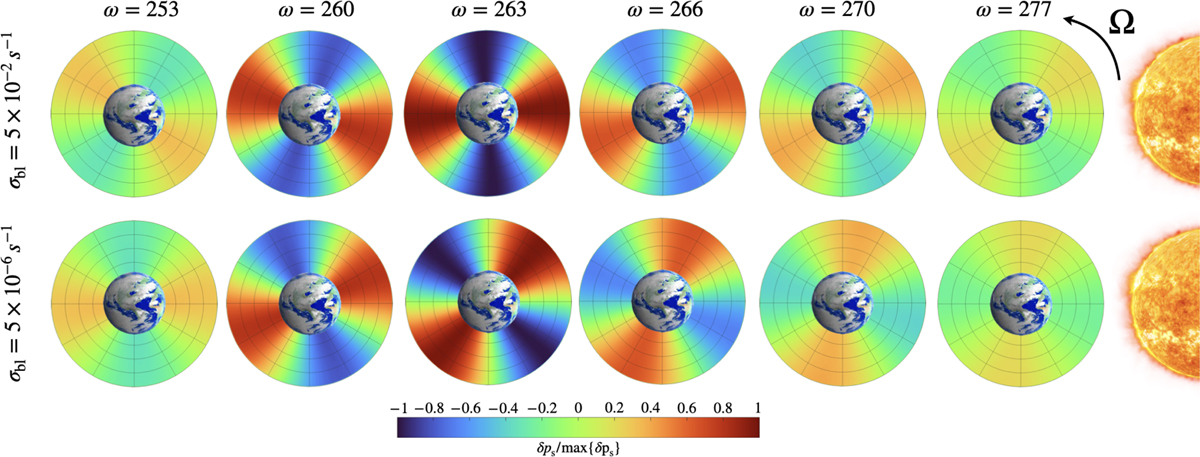Fig. 4

Download original image
Thermally induced tidal bulge revealed. Shown are polar snapshots of the radial and longitudinal variations of the tidal pressure anomaly δp(x) in the equatorial plane. The snapshots are shown from a top view, and the troposphere is puffed in size by virtue of the used mass-based vertical coordinate ϛ = p/ps. The longitudinal axes are shown in increments of 30° with 0° at the substellar point, while the radial axes are in increments of 0.25. The profile of the pressure perturbation is also normalized by the exponentially decaying pressure background profile. Snapshots are taken at different spectral positions that cover the passage through the Lamb resonance, which specifically occurs at ω = 262.6. In the top row, the response describes the limit of a planet with a synchronous atmospheric absorption, mimicking the Earth’s direct absorption by ozone and water vapor, and it shows the continuous movement of the bulge, function of ω, from lagging to leading the substellar point. In contrast, in the bottom row, and for the prescribed value of σbl, the delayed response of the ground forces the bulge to always lag the substellar point, thus acting to decelerate the planetary rotation.
Current usage metrics show cumulative count of Article Views (full-text article views including HTML views, PDF and ePub downloads, according to the available data) and Abstracts Views on Vision4Press platform.
Data correspond to usage on the plateform after 2015. The current usage metrics is available 48-96 hours after online publication and is updated daily on week days.
Initial download of the metrics may take a while.


